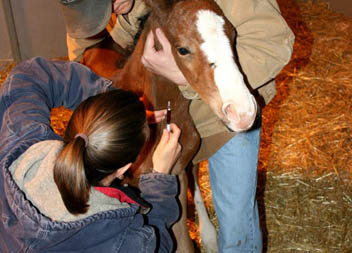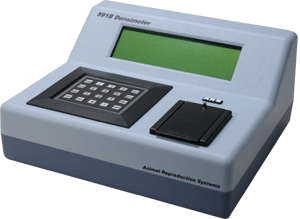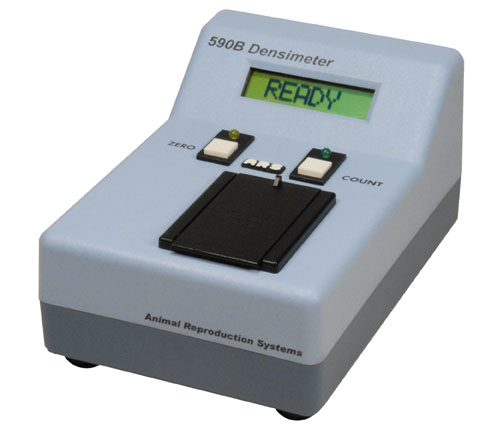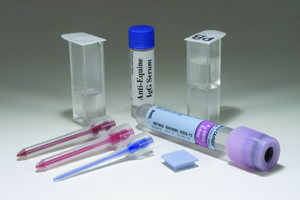| Click here to view this page in your web browser. |
|
ARS Announcement Animal Reproduction Systems Product Spotlight |

|
|
Rapid Foal IgG Testing
Identify Foals with Failure of Passive Transfer using an alternate
calibration for the the ARS 590 or 591 Densimeter.
Validated Turbidimetric Immunoassay from Animal Reproduction Systems
ARS Foal IgG Test offers:
|
|
|
|

|
|
Newborn foals are dependent on maternal antibodies absorbed following ingestion of colostrum in the
first few hours of life for immune protection. No significant transplacental transfer of antibodies occurs
in utero. Failure of passive transfer (FPT) of maternal antibodies places the foal at significant risk of
infectious diseases. An IgG concentration of = 800 mg/dl is considered optimal. Plasma IgG levels 400
to 800 mg/dl may be adequate for healthy foals in a clean environment with minimal exposure to
pathogens. However, an IgG between 400 and 800 mg/dl may be inadequate for compromised or
systemically ill foals. An IgG concentration less than 400 at 24 hours of age indicates failure of passive
transfer (Table 1).
Table 1. Interpretation of plasma IgG concentrations in foals relative to passive transfer.
|

|
|
|
Early testing for antibody levels in a neonatal foal can identify potential cases of FPT and allow for early
intervention and medical management. A blood sample can be collected at approximately 12 hours
after birth and evaluated for IgG concentration.
|

|
|
|
Testing at = 24 hours of age will determine the final extent of passive antibody absorption as no
significant amount of antibodies is absorbed after 24 hours of age. Foals greater than 24 hours of age
identified with failure of passive transfer require intravenous administration of plasma to increase blood
antibody levels as oral absorption is negligible and therefore not indicated.
It is recommended that the IgG level of an at-risk foal be re-evaluated the day after administration of
colostrum or plasma to determine for additional supplementation.
Evaluation Techniques
Diagnostic tests for evaluation of plasma IgG levels in foals include the single radial immunodiffusion
(SRID), glutaraldehyde coagulation (GC), zinc sulfate turbidity test (ZST), latex agglutination test (LAT),
enzyme immunoassay (EIA) and turbidimetric immunoassay (TIA). The SRID test is the most accurate
test for quantitative measurement of serum or plasma antibody levels. However, results are generally
not available for 24 hours or more making it impractical for routine use when rapid results are required.
Enzyme immunoassays are semi-quantitative tests that utilize a color change to estimate IgG
concentrations in foal blood or plasma.
The ARS Foal IgG Test is a turbidimetric immunoassay based on a specific antigen-antibody
reaction in which goat anti-equine IgG binds to equine IgG in foal plasma. The concentration of foal
IgG is determined by the degree of turbidity, measured as percent light transmission in a calibrated
spectrophotometer (Densimeter). The ARS Foal IgG Test was validated against the SRID test.
Assay Steps:
|
|
|
The Foal IgG calibration can be added to any 590 or 591 Densimeter. Upgrade information for the
Please visit www.arssales.com/equine for information on all ARS products.
For more information call us at 1-800-300-5143 or visit our web site at www.arssales.com.
Comments/questions/suggestions - e-mail them to sales@arssales.com
|